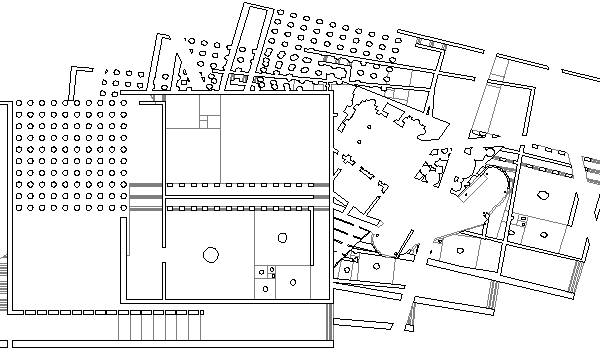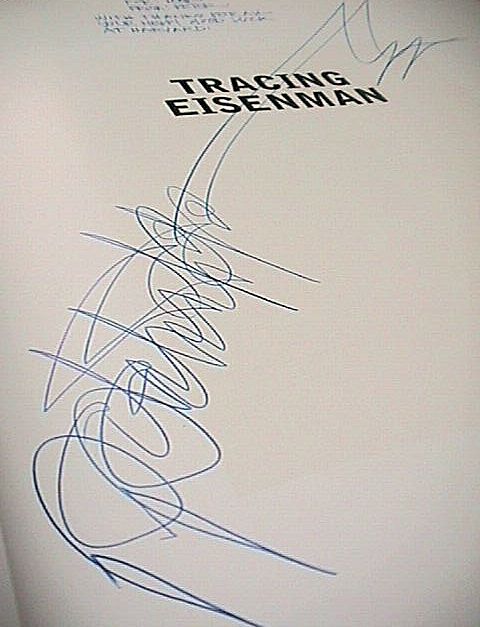2013.05.14 21:31
14 May
Three other variations on the theme remain for special comment. This trio have in common the idea, typical of synthetic eclecticism, of creating a new building type by combining elements from two of the most famous buildings of antiqity, the Parthenon and the Pantheon. Thus, perhaps, something new is created, something taking of the universally acknowledged excellences of these archetypes. It is too much to say that the combinations surpass either of the paradigms, but it cannot be denied that the resulting contrasts of form are productive of novel and provocative aesthetic effects. Similar juxtapositions of well-known and heavily associated forms were a commonplace in the projects of imaginative architects at this time, such as Boullee, Gilly, and Valadier; and Robert Mills proposed a combination of a Doric colonnade and an obelisk for the Washington Monument.
Carroll L. V. Meeks, "Pantheon Paradigm" (JSAH: 1960.12, 142).
Aldo Ross's Modena cemetery design of 1971 has been one of the most widely discussed architectural projects of the past decade. Now under construction, on the basis of a revised plan of 1976, Rossi's cemetery demonstrates his use of established architectural types, in unexpected combinations, to convey specific ideas about architecture and life.
Some critics, such as Manfredo Tafuri, have taken the view that the meaning of Rossi's design cannot be verbalized. This articale seeks to demonstrate that the oposite is the case. Here, Rossi's sources and writings are explored in tandem, in order to unravel the complex message contained in his cemetery design. In particular, Rossi's debts to Piranesi, Boullee, Loos, Hannes Meyer, Le Corbusier, and de Chirico are discussed.
Eugene J. Johnson, "What Remains of Man--Aldo Rossi's Modena Cemetery" (JSAH, 1982.3, 38).
Eternal Wrest in Pieces
just thought of that while typing the above.
His book is designed as a megastructure, and we all know now their fate today.
Read together, they avail us of the opportunity to be placed both "within" and "without" at one and the same time, which none of the books on their own would allow.
Chris Fawcett, "The Rites of Criticism" (JSAH, 1980.5, 155-6).
He asserts that as early as the 18th century, Piranesi discerned that a wholly organized world is not a paradise but a nightmare. The full consequences of these contradictions, however, were not worked out until the 20th century.
I trust that Tafuri's advise will be similarly ignored.
The great value of Architecture and Utopia lies not in its political prescriptions but in its wealth of insights into the relationship between architecture and social theory since the Enlightment. Therein also lies its great frustration. The book touches on a bewildering variety of topics from Abbe Laugier to Andy Warhol until it seems less like a sustained argument than a series of brilliant asides. The pace is a rapid as the scene in Godard's "Breathless" in which the characters race each other through the galleries of the Louvre.
Robert Fishman, "Utopia and its Discontents" (JSAH, 1980.5, 153-5).
| |
2014.02.04
the beginning of Unthinking an Architecture
The Meta Sudantis is the point from which to start a measure of distance to or from. (Is that the correct definition?) The theory that the Pantheon marks the spot where Romulus ascended into heaven/left Earth also seems to be a place to start 'unthinking'. The Pantheon leads to many other issues/topics: promenade architecturale, Pantheon paradigm/reenactment, osmotic/electro-magnetic architecture (outside inside, light), gateway to heaven (Danteum. Promenade architecturale), and whatever else is in the collection pages.
Unthinking an Architecture will follow the 'pleasure of the text' paradigm; taking pleasure in always unthinking the architectural topic being investigated; continually utilizing an atypical treatment of the matter at hand. Taking pleasure in turning the texts into architectures (themselves). Should the title be Unthinking Architectures? That harks back to schizophrenia + architectures, and there is indeed inspiration there (in terms of a continual generation of data). And there is more inspiration: SMLXL, Lequeu, Hejduk's books, Piranesi's works, Metapolis Dictionary, MOVE, Learning from Las Vegas. Or, how about using the top ten must have architecture books:
Le Corbusier, Oeuvre Complète 1957-65.
Dal Co and Forster, Frank O. Gehry: The Complete Works.
John Hejduk, Adjusting Foundations.
El Croquis 131/132 and El Croquis 134/135 (OMA/AMO/Rem Koolhaas).
James Stirling - Michael Wilford & Associates: la Nuova Galleria di Stato e Stoccarda.
van Berkel and Bos, MOVE.
Liane Lefaivre, Leon Battista Alberti's Hypnerotomachia Poliphili.
Oppositions 18.
Lotus International 35 or Learning from Las Vegas (first edition).
Luigi Ficacci, Piranesi: The Complete Etchings?
or Epicentral, Learning from Girard Avenue, Theatrics Times Two...
The Meta Sudantis also brings up a number of tangential issues: innuendo, Love Park, Parkway Interpolation, Ichnographia Quondam, the Triumphal Way (both directions--there's lots of architecture to analyze and design there).
So, how does all this get to the cutting edge, the place where architectures are unthought? Perhaps the destination is reached when the texts turn into architectures (themselves). All the stories turn into (new) designs. Today's work with the Danteum and the Palace of Ottopia is a prime example of how the 'stories' generate their own 'unthought' architectures.
 Now there are glimpses of how Quondam will continue to operate. The whole site is open to unthinking, interpretation, experimentation, but there is a formal place for Unthinking (an) Architecture(s) to unfold and fold again. Or is it to be more labyrinthine? The whole undoing could be connected by links. In any case, proceed by always unthinking whatever is to be figured out, or whatever obstacle might be in the way, or whatever graphics might be best suited for the representation. Does all the unthinking occur within the space-time continuum?
Now there are glimpses of how Quondam will continue to operate. The whole site is open to unthinking, interpretation, experimentation, but there is a formal place for Unthinking (an) Architecture(s) to unfold and fold again. Or is it to be more labyrinthine? The whole undoing could be connected by links. In any case, proceed by always unthinking whatever is to be figured out, or whatever obstacle might be in the way, or whatever graphics might be best suited for the representation. Does all the unthinking occur within the space-time continuum?
| |
2014.05.14 13.16
14 May
Coincidentally, one of the items the mailman delivered today was a copy of Tracing Eisenman, which I successfully/cheaply bid on last week. To my surprise, the book is signed by Peter Eisenman himself, twice even.

Get it? Peter Eisenman tracing Peter Eisenman, literally.
|